Featured Images
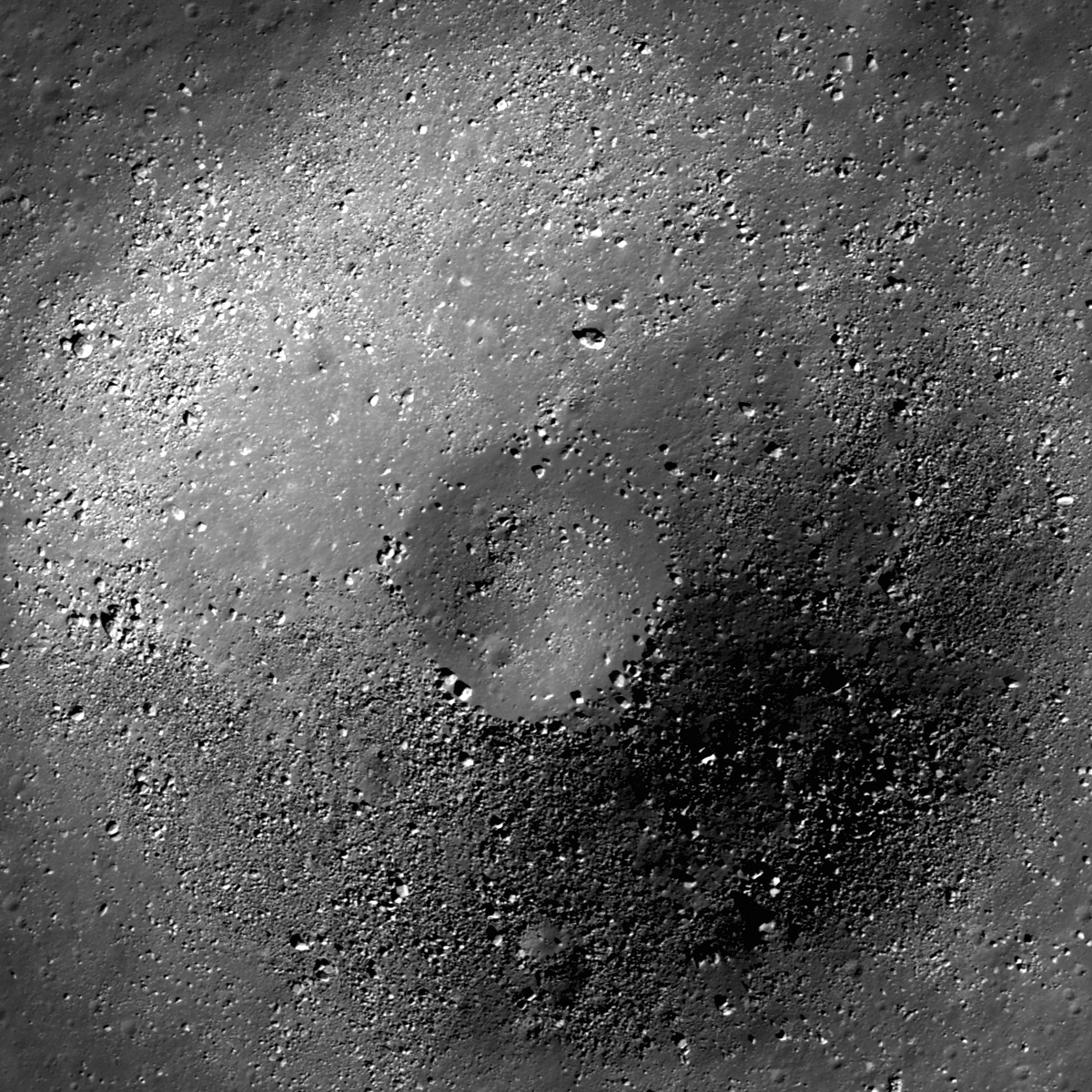
Small crater in Oceanus Procellarum
This unnamed 740 m diameter crater has bouldery walls and is morphologically similar to many <1 km diameter craters in the mare. Image width is 847 m, LROC NAC M127328861L [NASA/GSFC/Arizona State University].
Published on 22 Mar 2011
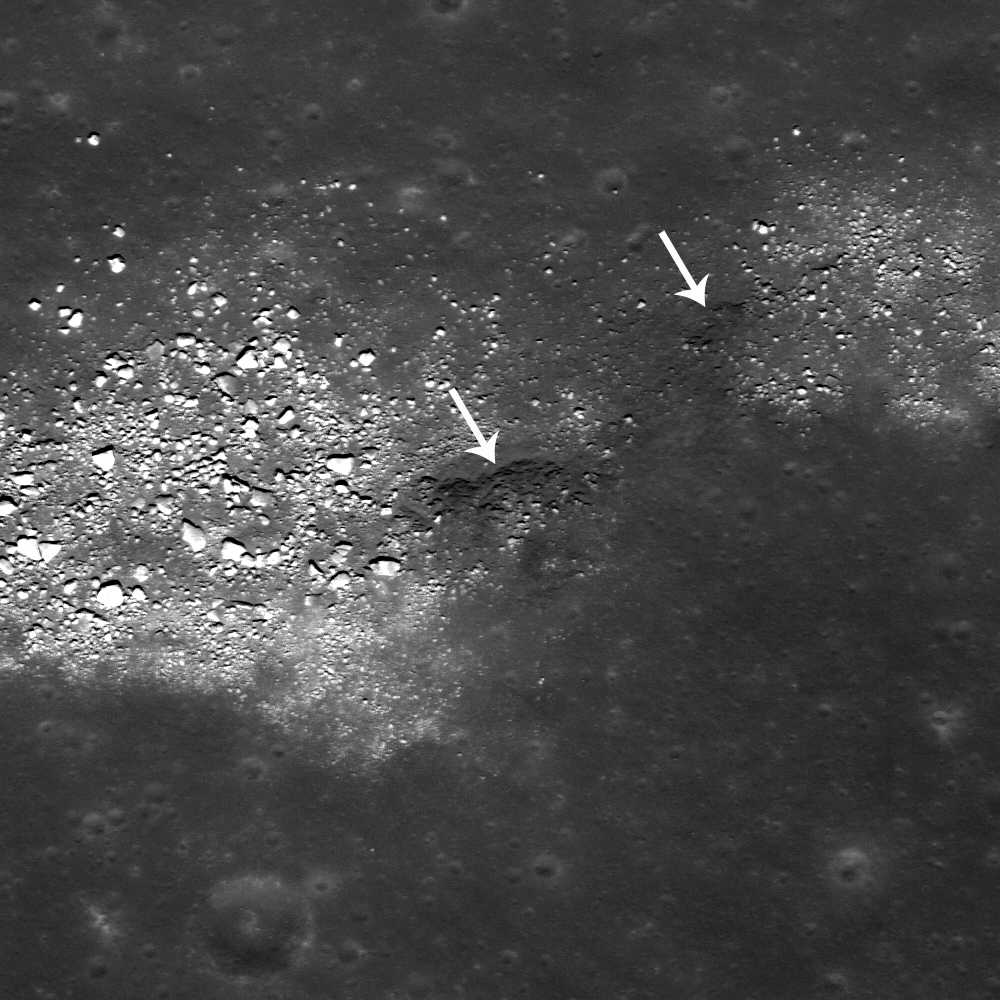
Buckland Boulders
The two white arrows point to a likely outcrop of bedrock in this wrinkle ridge. LROC NAC M109141090L, image is 0.5 m/pixel, incidence angle is 21° [NASA/GSFC/Arizona State University].
Published on 09 Mar 2011
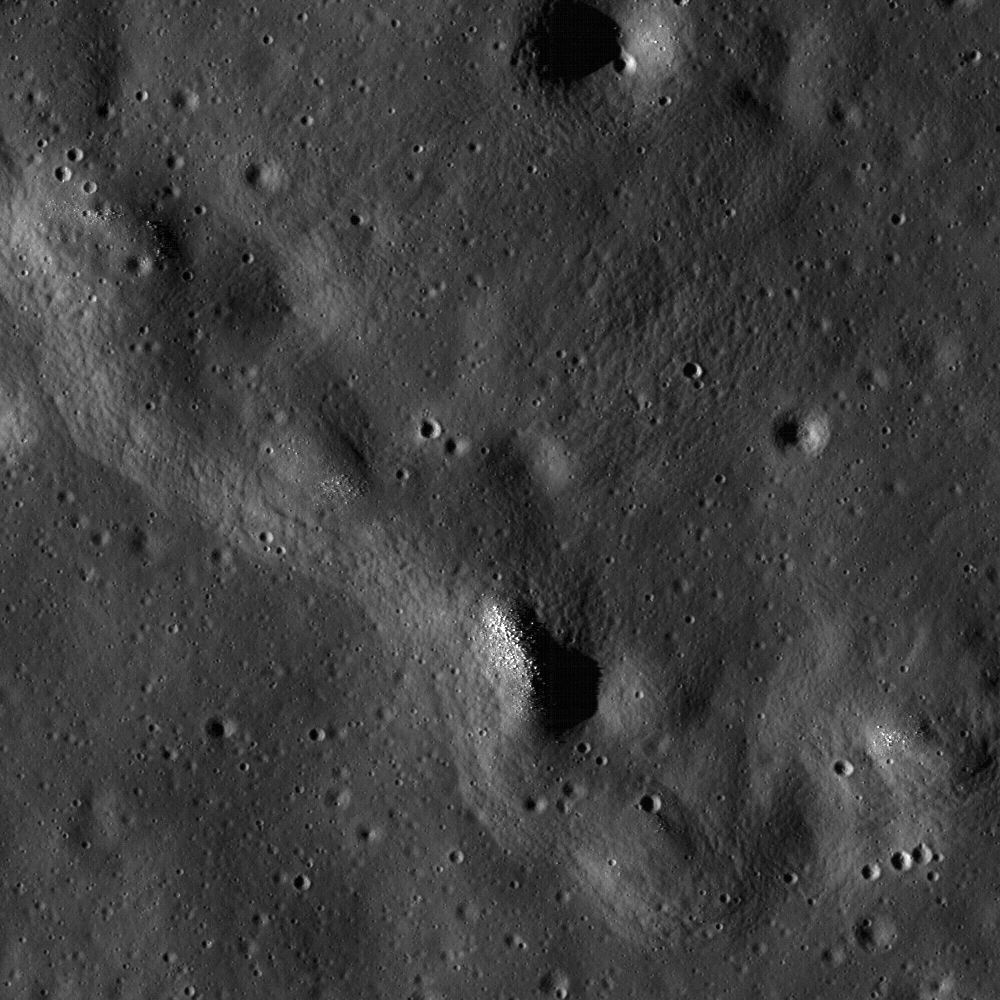
Wrinkle ridge in Oceanus Procellarum
Exposed boulders are clustered on the crest of a sharply defined wrinkle ridge, much like sprinkles on an ice cream cone. Image width is 680 m and illumination is from the lower left in LROC NAC M117881169R [NASA/GSFC/Arizona State...
Published on 02 Jul 2010
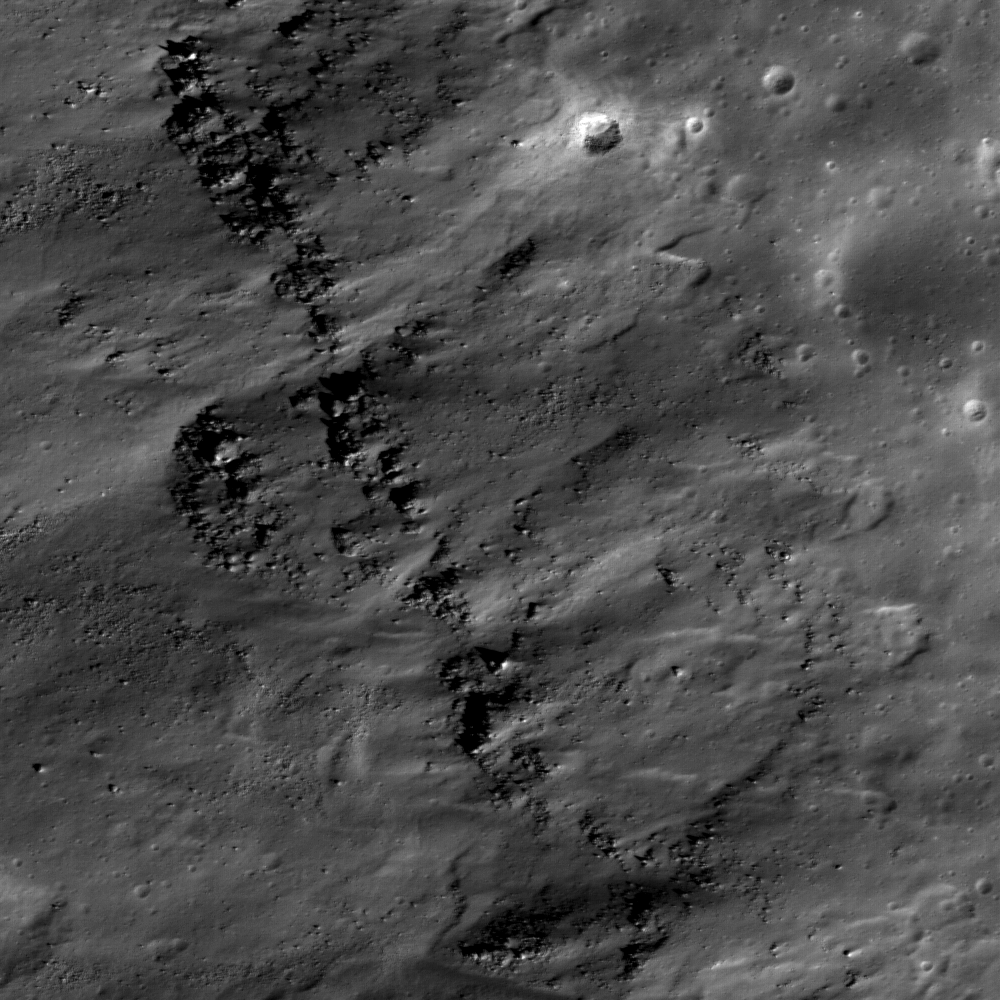
Lichtenberg Crater - A Constellation Region of Interest
This close up image of the wall of Lichtenberg crater shows distinct layering of pre-impact mare deposits. NAC frame M112040133L; scene is 530 m across [NASA/GSFC/Arizona State University].
Published on 15 Jun 2010

Gruithuisen Domes - Constellation Region of Interest
A small rille hugging the contours at the base of Gruithuisen Gamma, at the contact between the dome and the surrounding mare. Image is 1.6 km wide, illumination is from the left, NAC frame M104776541R [NASA/GSFC/Arizona State University].
Published on 08 Jun 2010
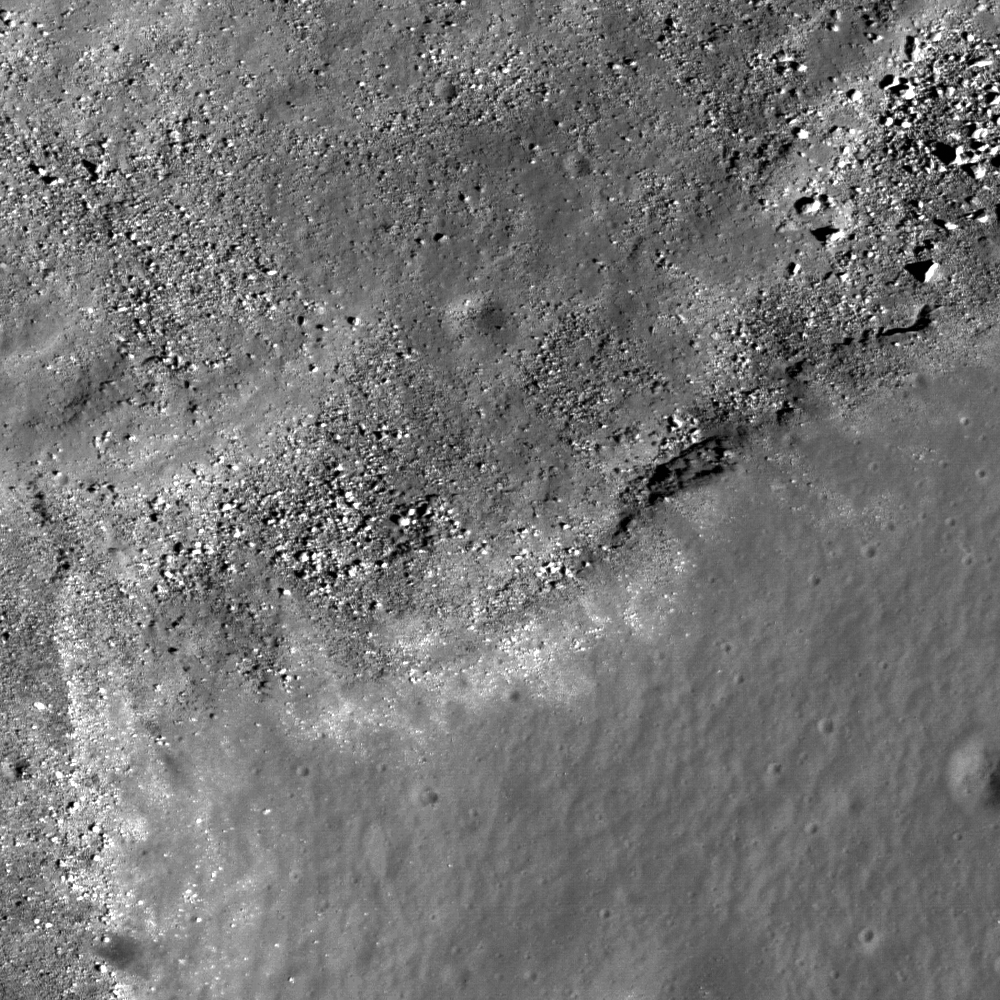
Marius Hills Constellation region of interest
Rim of a large sinuous rille on the western edge of the Marius Hills Constellation region of interest, showing materials that have slumped into the bottom of the sinuous rille towards the northwest as well as (possibly) outcrop, a prime...
Published on 01 Jun 2010
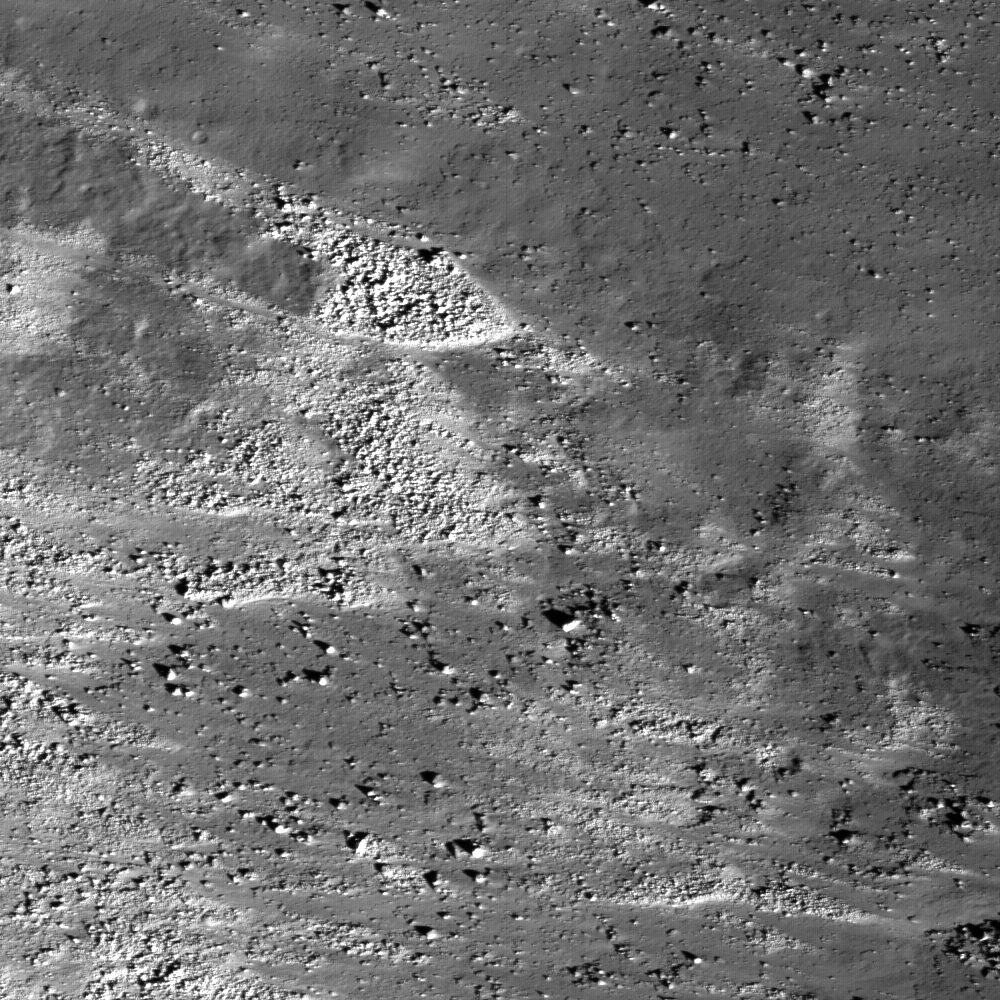
Aristarchus Plateau (1): Amazing Geologic Diversity
Eastern slope (right to left is downhill) of the Vallis Schröteri, "Cobra Head". This feature is located in the western portion of a Constellation Program region of interest on the Aristarchus plateau. The slopes of the Cobra Head are...
Published on 19 Jan 2010
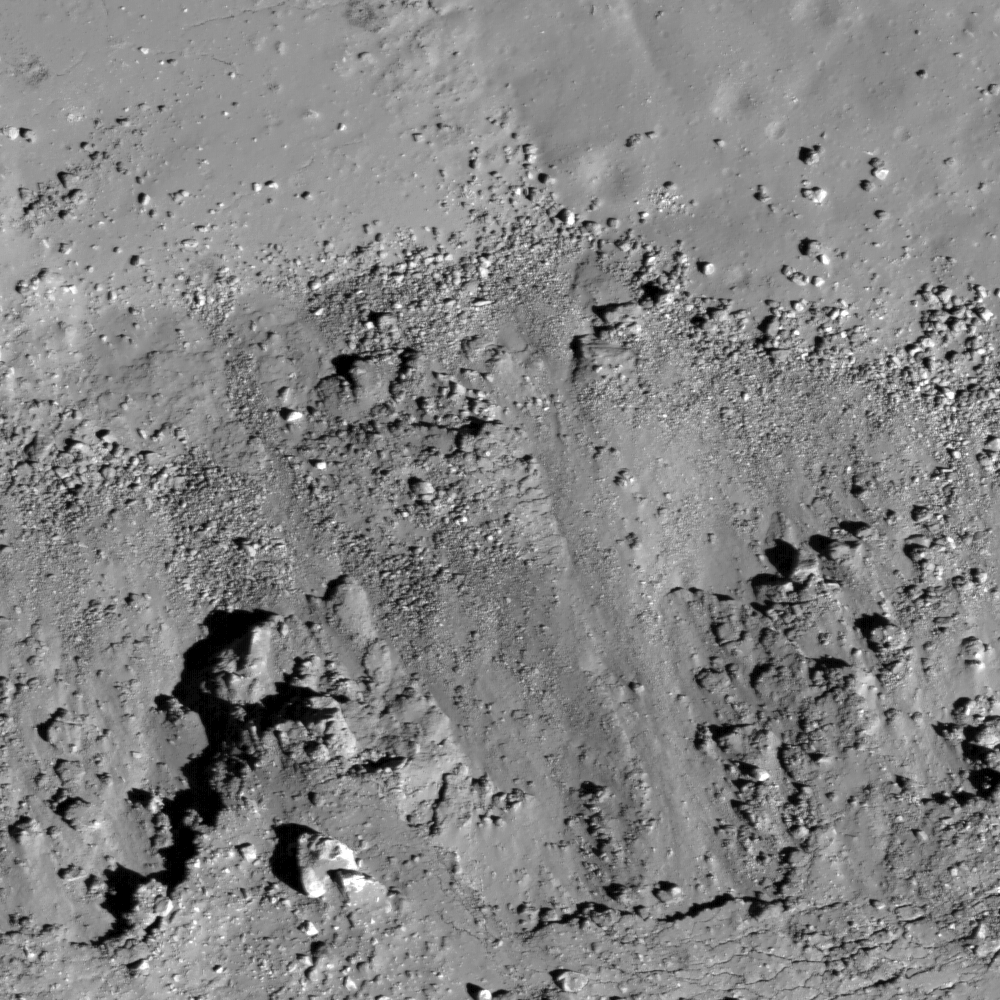
Fresh Copernican Crater
Subset of NAC Image M112162602L showing landslides (bottom) covering impact melt on the floor (top) of a fresh Copernican-age crater at the edge of Oceanus Procellarum and west of Balboa crater. Image width is 550 m [NASA/GSFC/Arizona...
Published on 21 Dec 2009
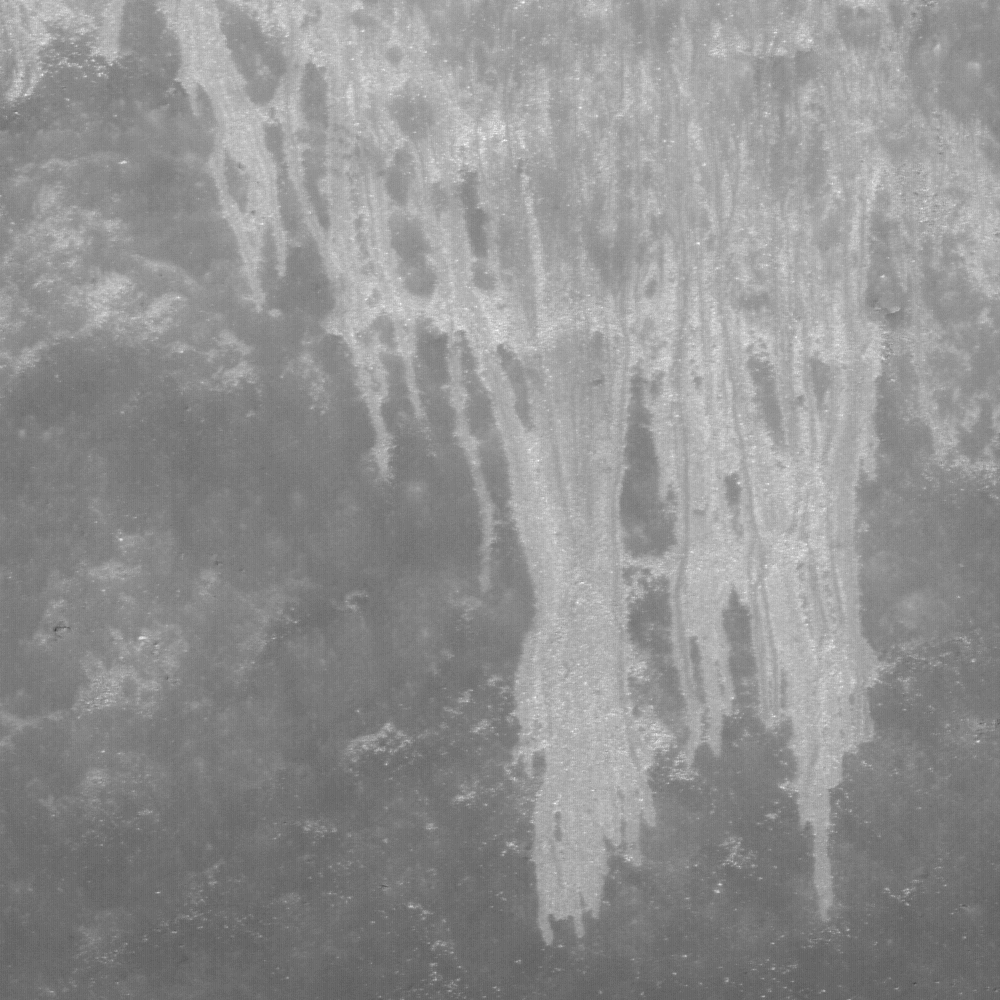
Landslides in Marius Crater
Landslide deposits seen on the steep interior slopes of Marius crater, image is 510 meters wide [NASA/GSFC/Arizona State University].
Published on 05 Nov 2009
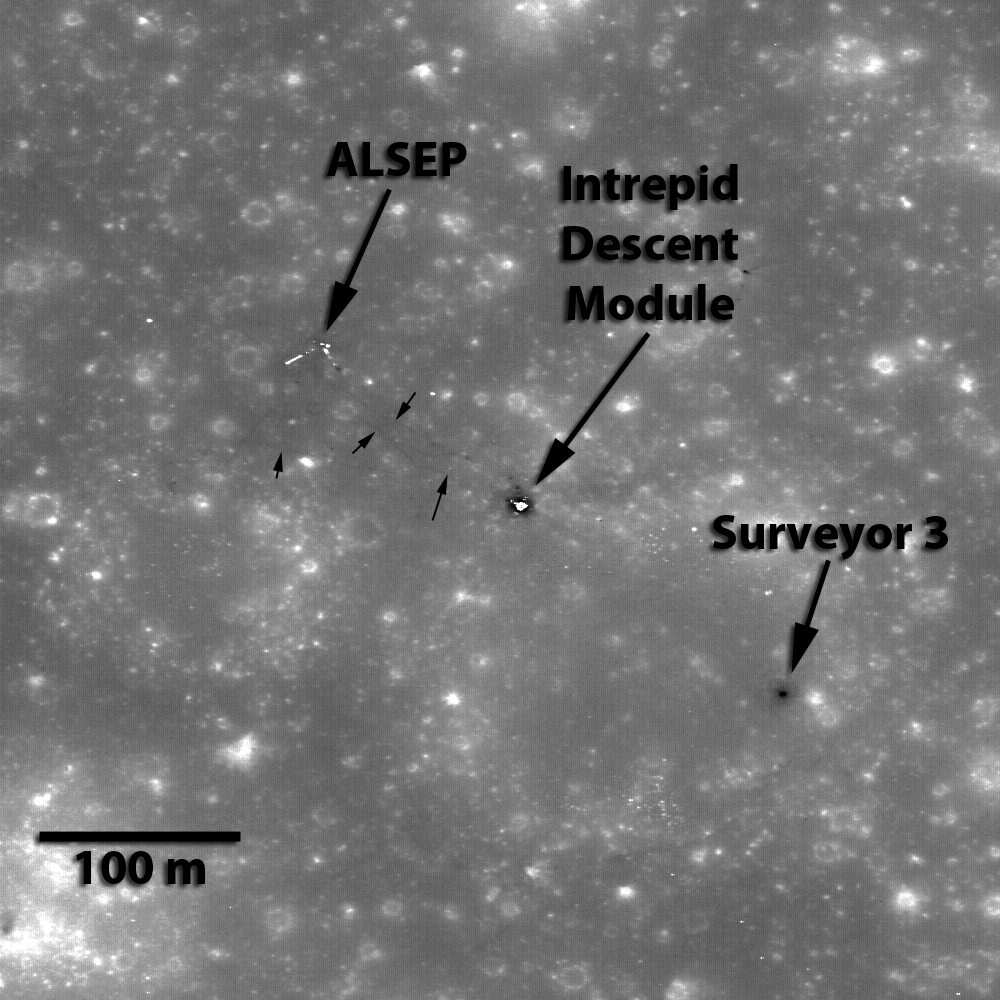
Apollo 12 Second Look: Midday on the Ocean of Storms
New view of the Apollo 12 landing site in Oceanus Procellarum imaged from the LRO mapping orbit. Small black arrows show locations where astronaut footpaths can be clearly discerned. Image width is 490 meters [NASA/GSFC/Arizona State...
Published on 04 Nov 2009
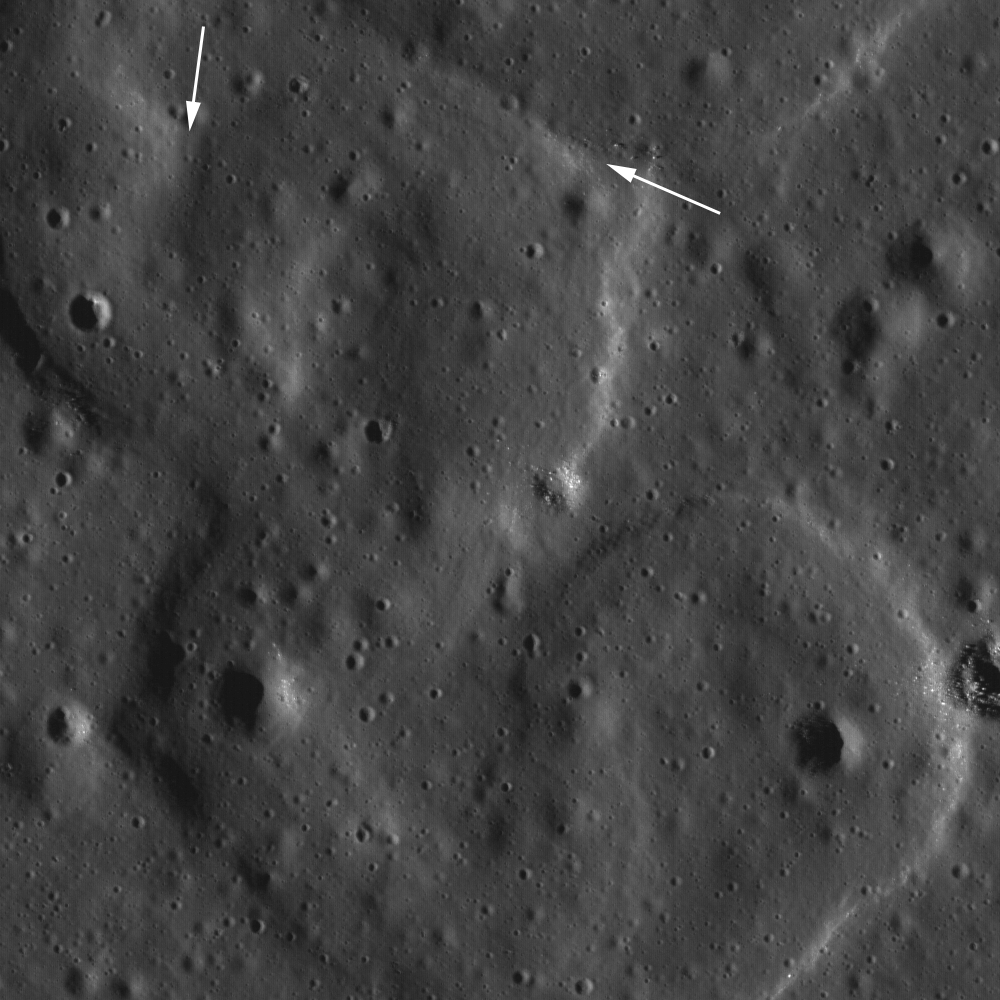
A Very Sinuous Rille
Two oxbow bends along the length of a sinuous rille located on a mare-filled crater floor. The tight twists and turns of the rille suggest that a very turbulent lava flow formed this rille. Subarea of uncalibrated LROC NAC frame...
Published on 07 Oct 2009
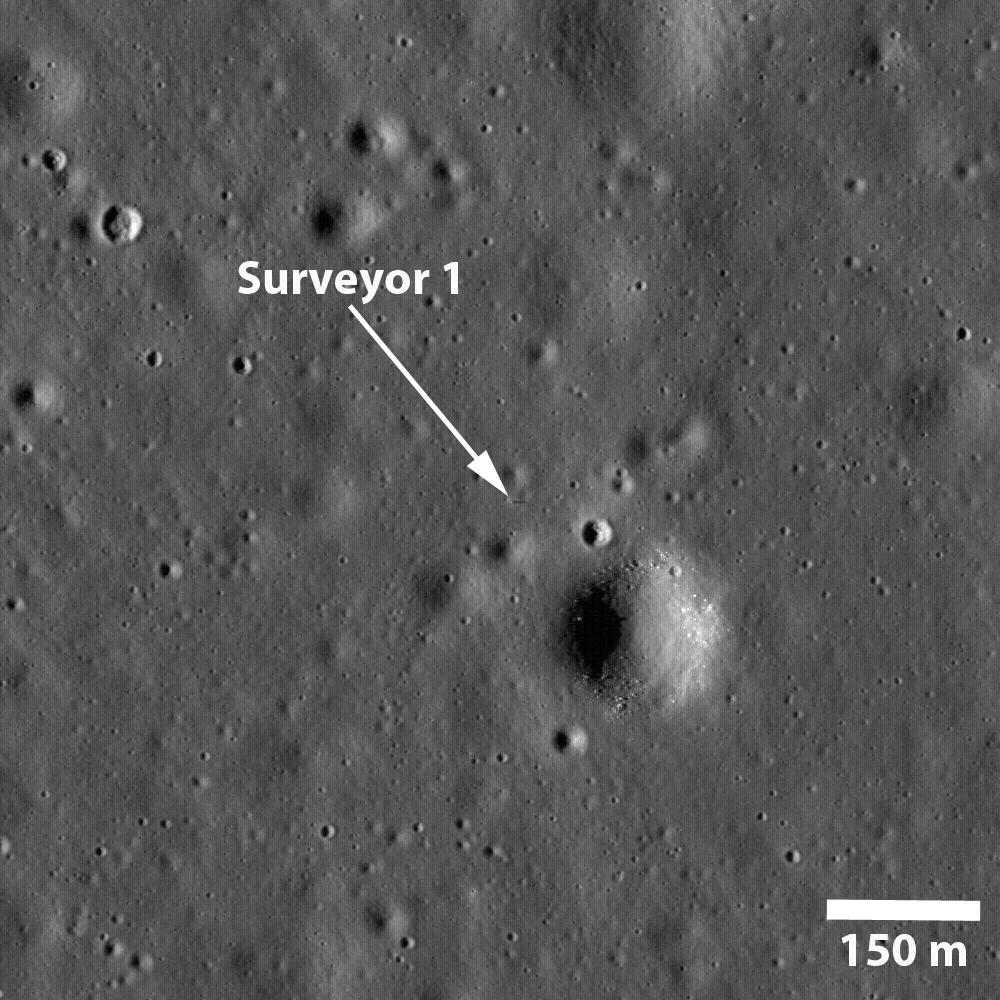
Surveyor 1 - America’s first soft lunar landing
Surveyor 1 spacecraft sitting silently on Oceanus Procellarum, the first US spacecraft to land on another planet (June 2, 1966). The image was taken in the lunar afternoon such that the sun in low on the western horizon and the 3.3...
Published on 30 Sep 2009

First Look: Apollo 12 and Surveyor 3
First look at Apollo 12 landing site, the Lunar Module descent stage, Experiment package (ALSEP) and Surveyor 3 spacecraft are all visible along with astronaut tracks (unmarked arrows). Image is 824 meters wide, north up...
Published on 03 Sep 2009